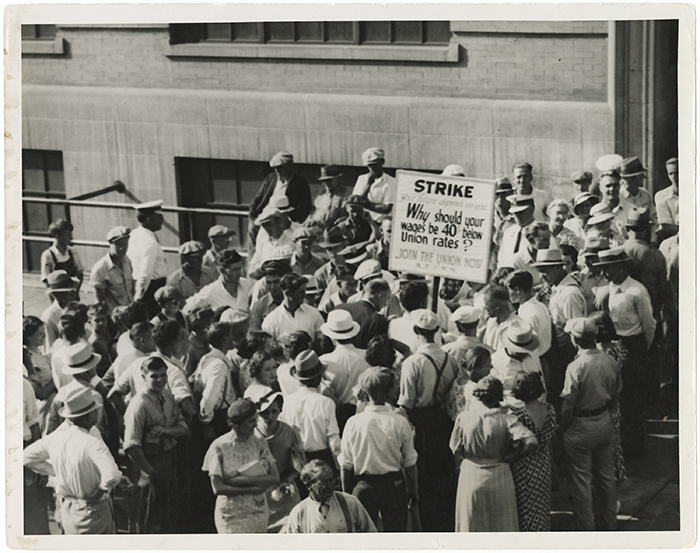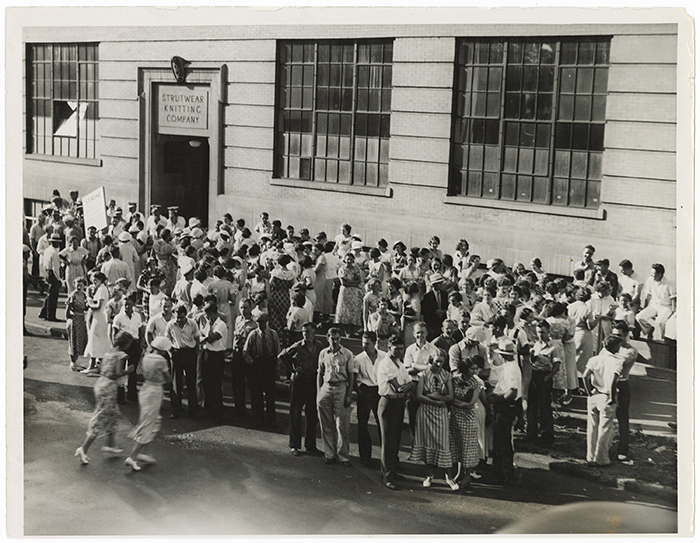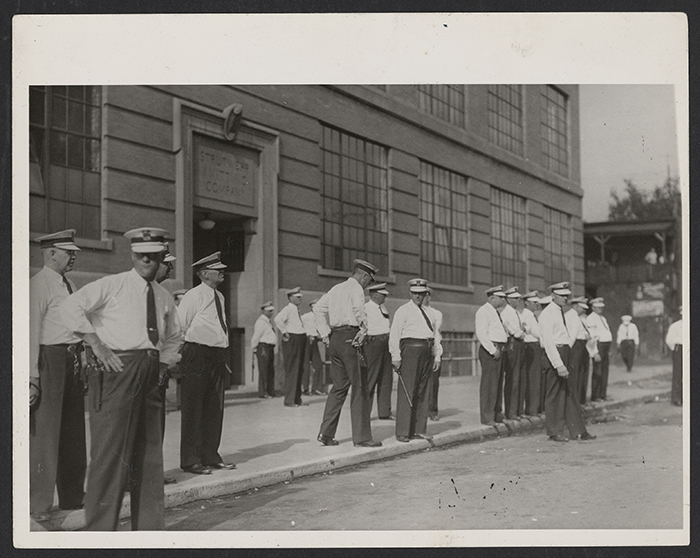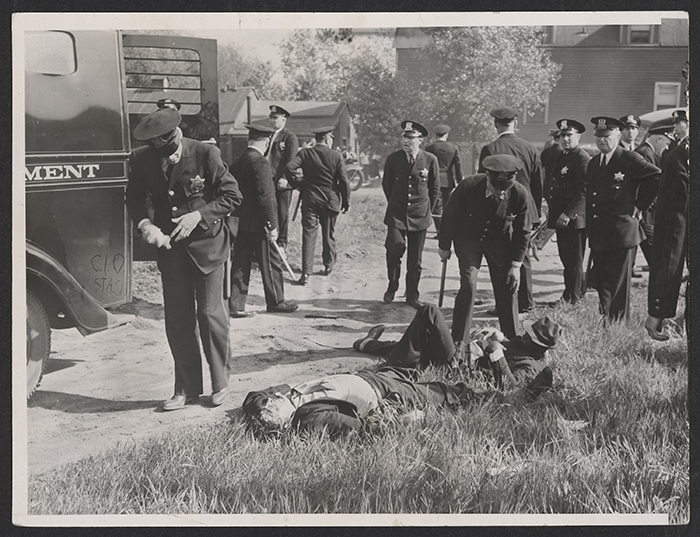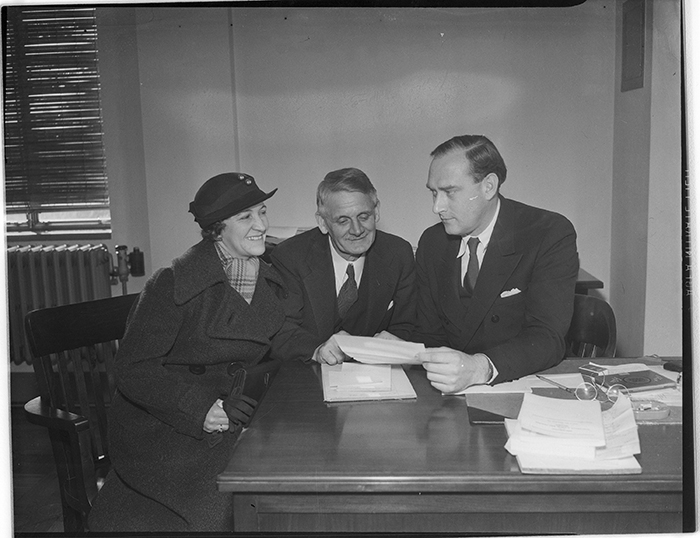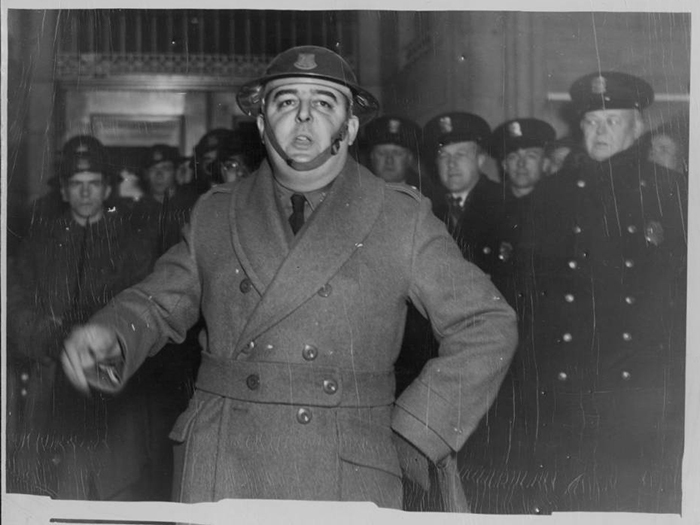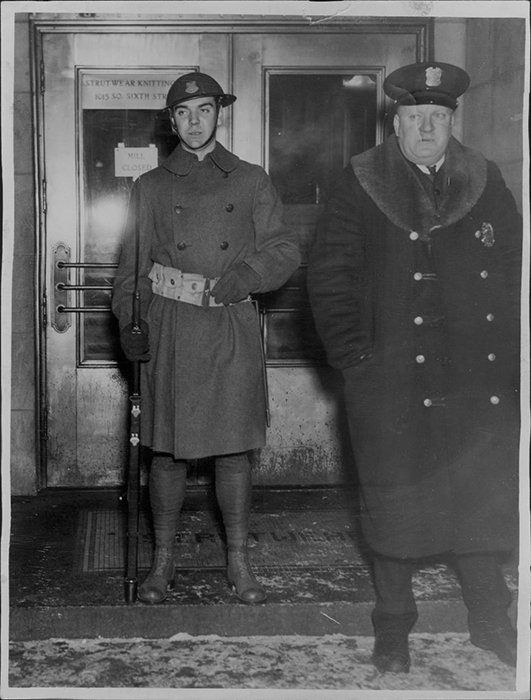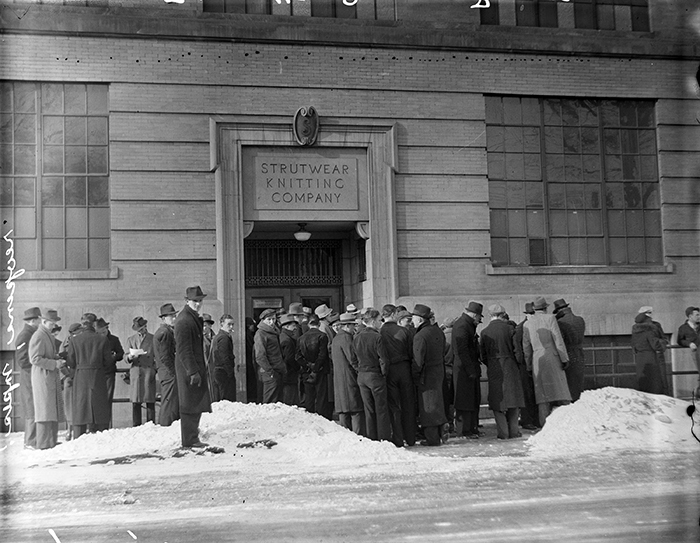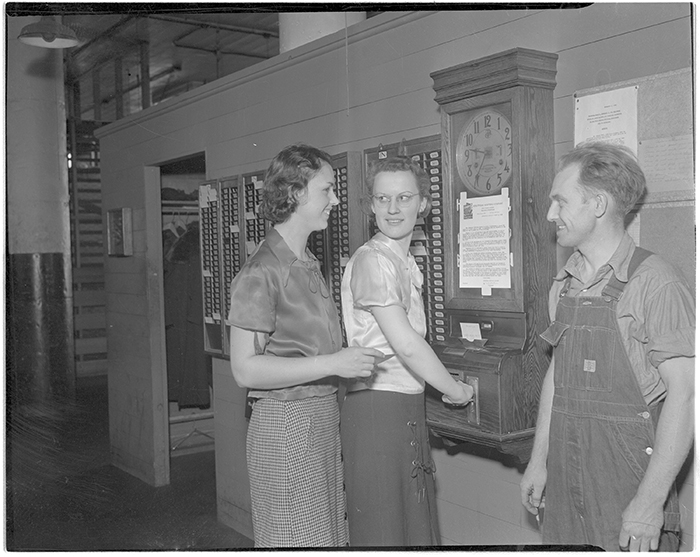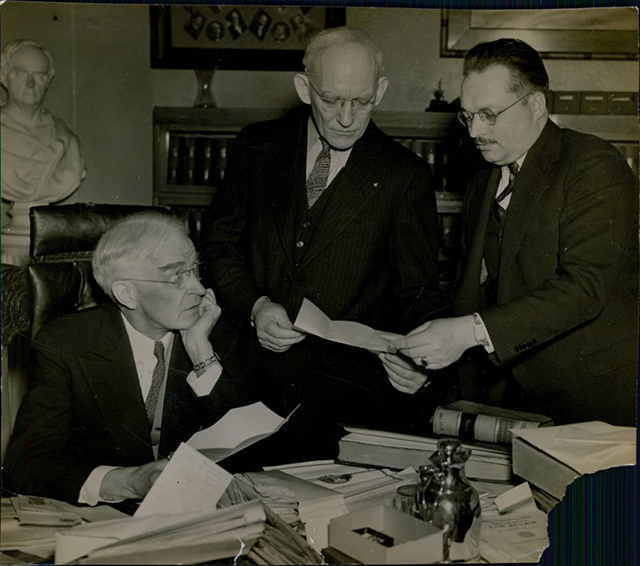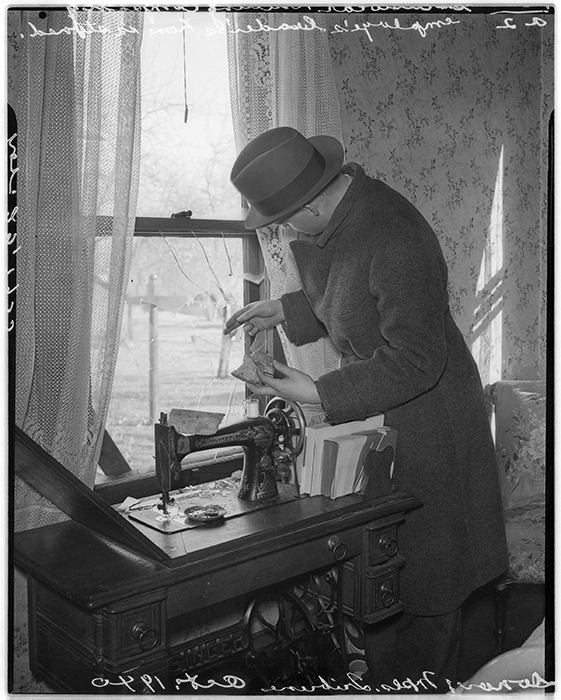Strutwear Knitting Company Strike, 1935–1936
Bibliography
“Citizen Asks Strutwear Co. Employe [sic] Vote.” Minneapolis Star, October 25, 1935.
“Early Strutwear Verdict Pledged by Judge Hughes.” Minneapolis Tribune, March 28, 1936.
Faue, Elizabeth. Community of Suffering and Struggle: Women, Men, and the Labor Movement in Minneapolis, 1915–1945. University of North Carolina, 1991.
Foster, H. R. “City Hosiery Mills Employ Largest Force in History.” Minneapolis Journal, October 30, 1932.
“Funeral For J. A. Struthers On Wednesday.” Minneapolis Star, April 17, 1933.
“Hosiery Union States Its Case.” Minneapolis Journal, December 6, 1935.
“‘I’ll Enforce Law and Order If Strutwear Reopens’––Latimer.” Minneapolis Journal, December 9, 1935.
“Knitting Plant to Stay Closed.” Minneapolis Star, August 20, 1935.
Millikan, William. A Union Against Unions. Minnesota Historical Society, 1991.
Quam, Lois, and Peter J. Rachleff. “Keeping Minneapolis an Open Shop Town.” Minnesota History 50, no. 3 (Fall 1986): 105–117.
https://storage.googleapis.com/mnhs-org-support/mn_history_articles/50/v50i03p105-117.pdf
“Strutwear Co. Writes Mayor.” Minneapolis Tribune, November 2, 1935.
“Strutwear Company Plans New Plant.” Minneapolis Morning Tribune, April 2, 1922.
Strutwear Knitting Co. v. Olson, 13 F. Supp. 384 (D. Minn. 1936).
https://law.justia.com/cases/federal/district-courts/FSupp/13/384/2096693
“Strutwear Reopens Monday.” Minneapolis Journal, April 5, 1935.
“Trial Opens in Labor Dispute.” Minneapolis Tribune, March 10, 1936.
“Troops Close Strutwear Plant.” Minneapolis Tribune, December 28, 1935.
“Union Studies Plan Offered by Strutwear.” Minneapolis Tribune, November 21, 1935.
“US Moves Strutwear Plant Machines.” Minneapolis Journal, November 27, 1935.
“W. A. Struthers Heads Strutwear.” Minneapolis Star, April 25, 1933.
Chronology
1916
1923
1927
1929
1930
1933
1935
1935
1935
1936
1936
1936
1937
Bibliography
“Citizen Asks Strutwear Co. Employe [sic] Vote.” Minneapolis Star, October 25, 1935.
“Early Strutwear Verdict Pledged by Judge Hughes.” Minneapolis Tribune, March 28, 1936.
Faue, Elizabeth. Community of Suffering and Struggle: Women, Men, and the Labor Movement in Minneapolis, 1915–1945. University of North Carolina, 1991.
Foster, H. R. “City Hosiery Mills Employ Largest Force in History.” Minneapolis Journal, October 30, 1932.
“Funeral For J. A. Struthers On Wednesday.” Minneapolis Star, April 17, 1933.
“Hosiery Union States Its Case.” Minneapolis Journal, December 6, 1935.
“‘I’ll Enforce Law and Order If Strutwear Reopens’––Latimer.” Minneapolis Journal, December 9, 1935.
“Knitting Plant to Stay Closed.” Minneapolis Star, August 20, 1935.
Millikan, William. A Union Against Unions. Minnesota Historical Society, 1991.
Quam, Lois, and Peter J. Rachleff. “Keeping Minneapolis an Open Shop Town.” Minnesota History 50, no. 3 (Fall 1986): 105–117.
https://storage.googleapis.com/mnhs-org-support/mn_history_articles/50/v50i03p105-117.pdf
“Strutwear Co. Writes Mayor.” Minneapolis Tribune, November 2, 1935.
“Strutwear Company Plans New Plant.” Minneapolis Morning Tribune, April 2, 1922.
Strutwear Knitting Co. v. Olson, 13 F. Supp. 384 (D. Minn. 1936).
https://law.justia.com/cases/federal/district-courts/FSupp/13/384/2096693
“Strutwear Reopens Monday.” Minneapolis Journal, April 5, 1935.
“Trial Opens in Labor Dispute.” Minneapolis Tribune, March 10, 1936.
“Troops Close Strutwear Plant.” Minneapolis Tribune, December 28, 1935.
“Union Studies Plan Offered by Strutwear.” Minneapolis Tribune, November 21, 1935.
“US Moves Strutwear Plant Machines.” Minneapolis Journal, November 27, 1935.
“W. A. Struthers Heads Strutwear.” Minneapolis Star, April 25, 1933.














